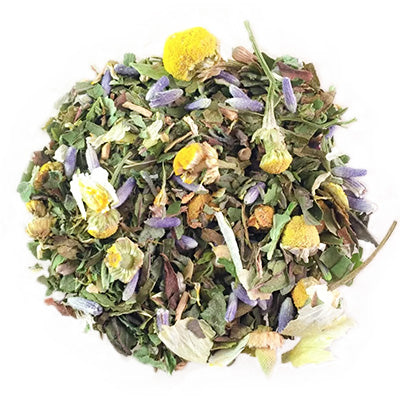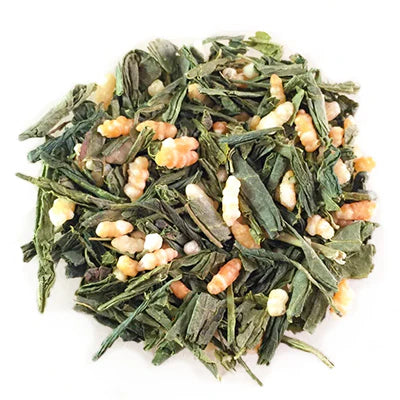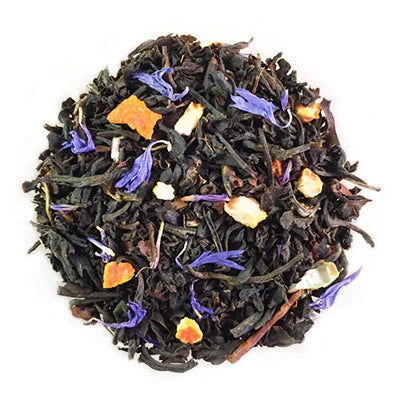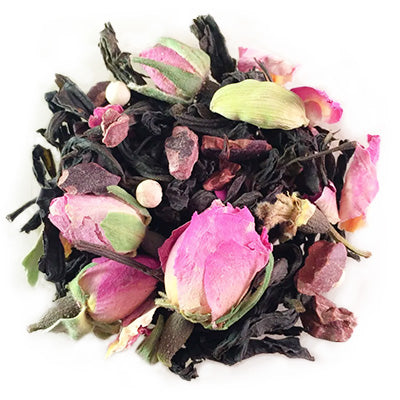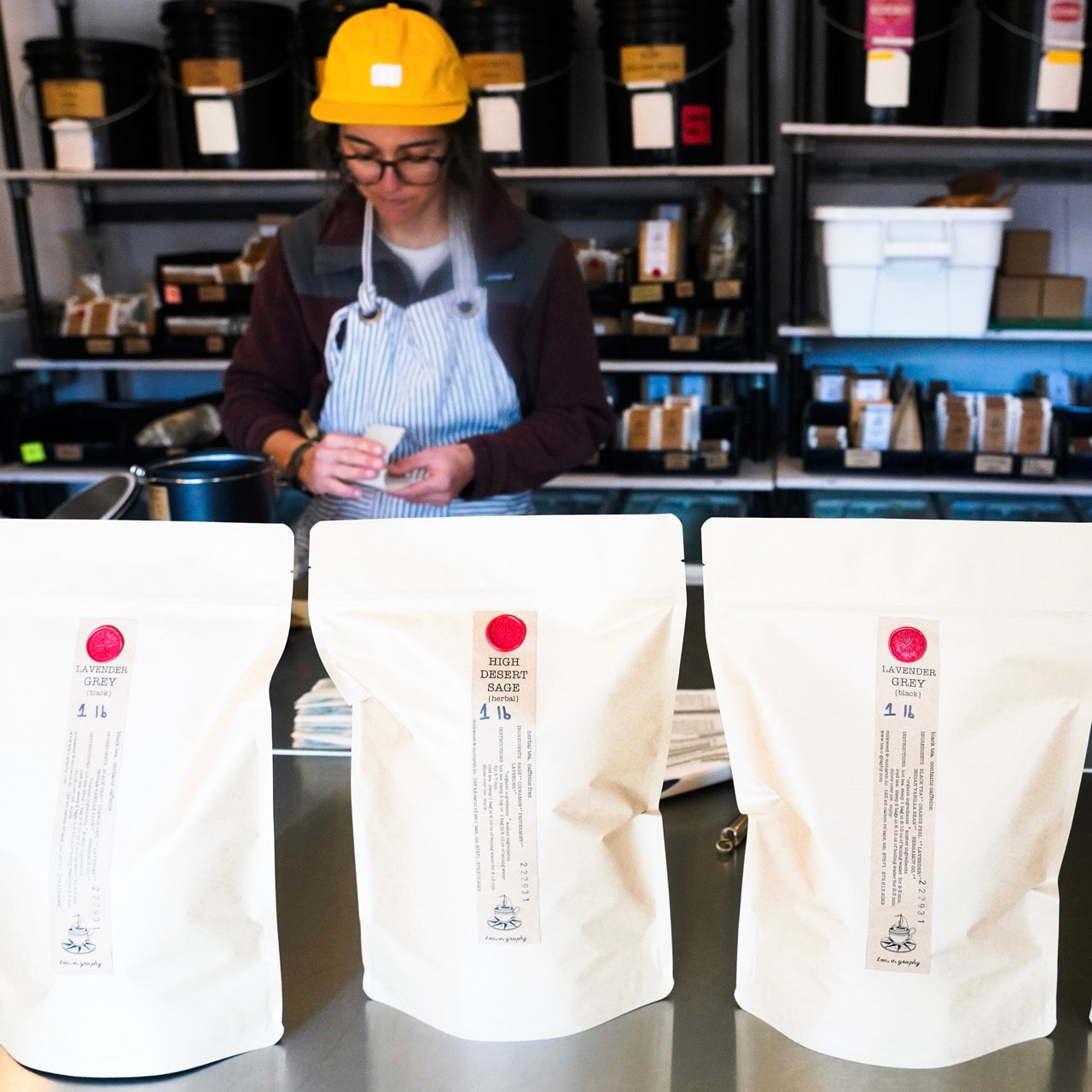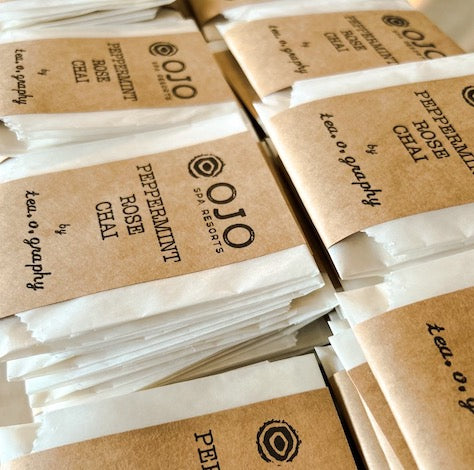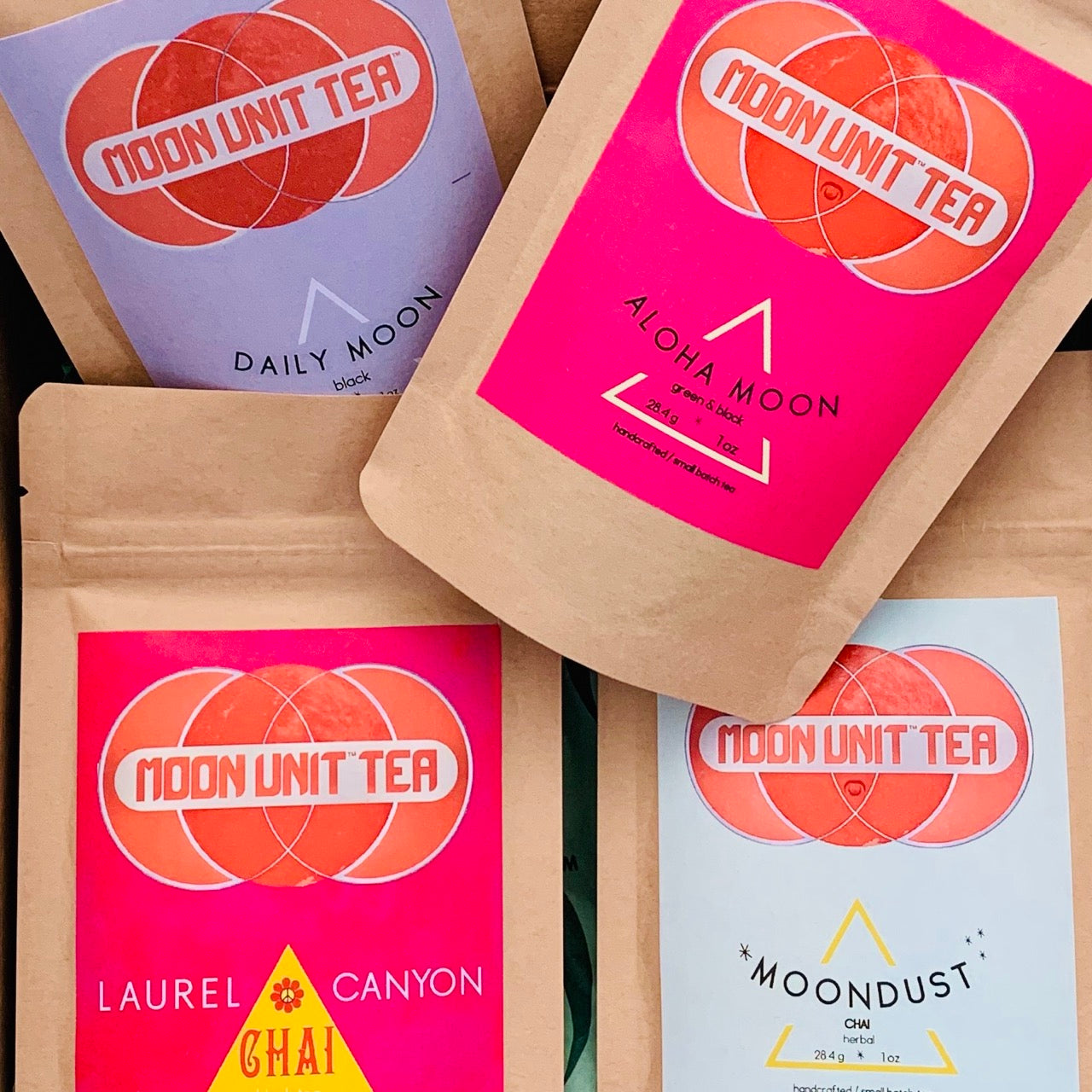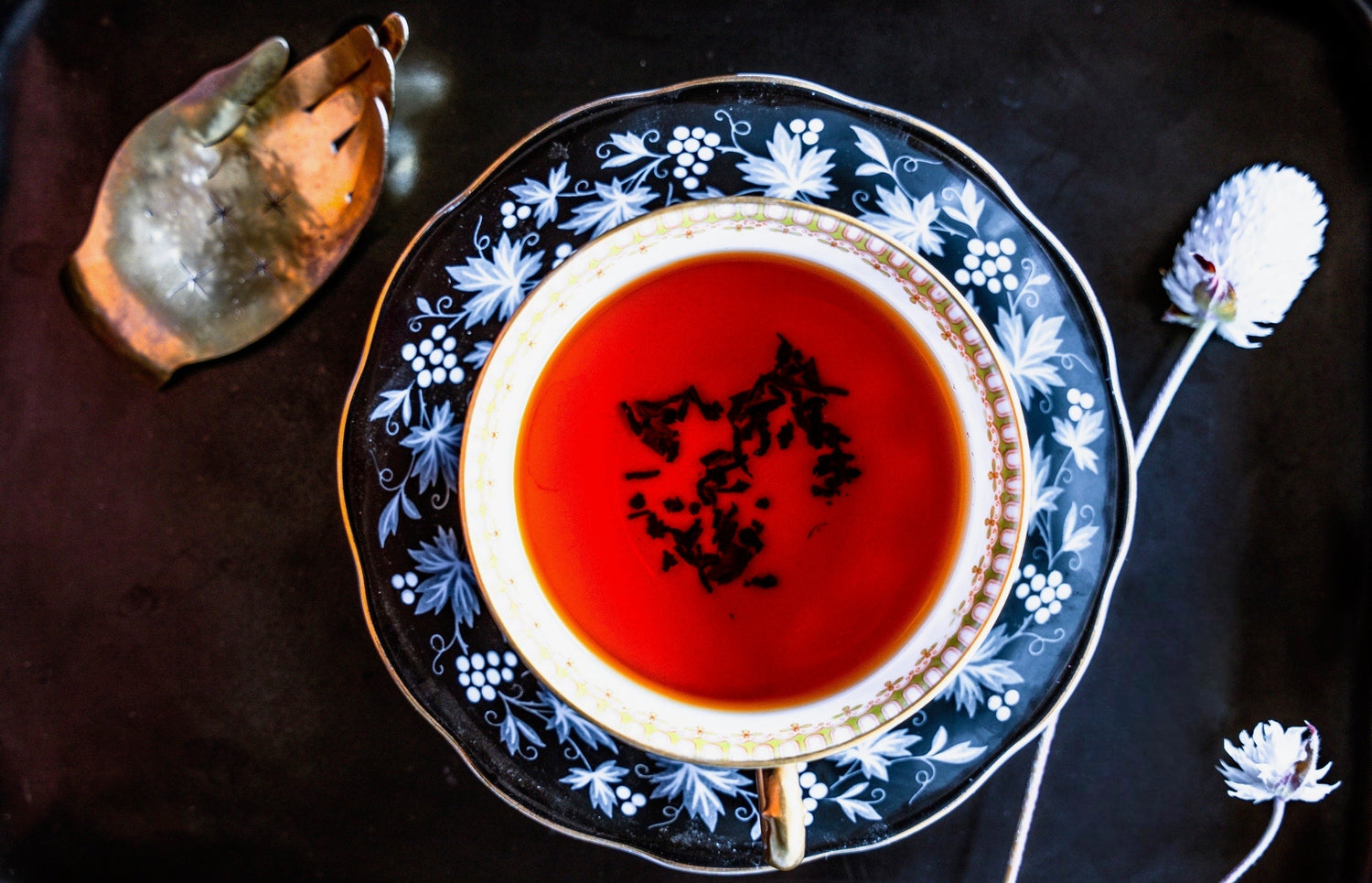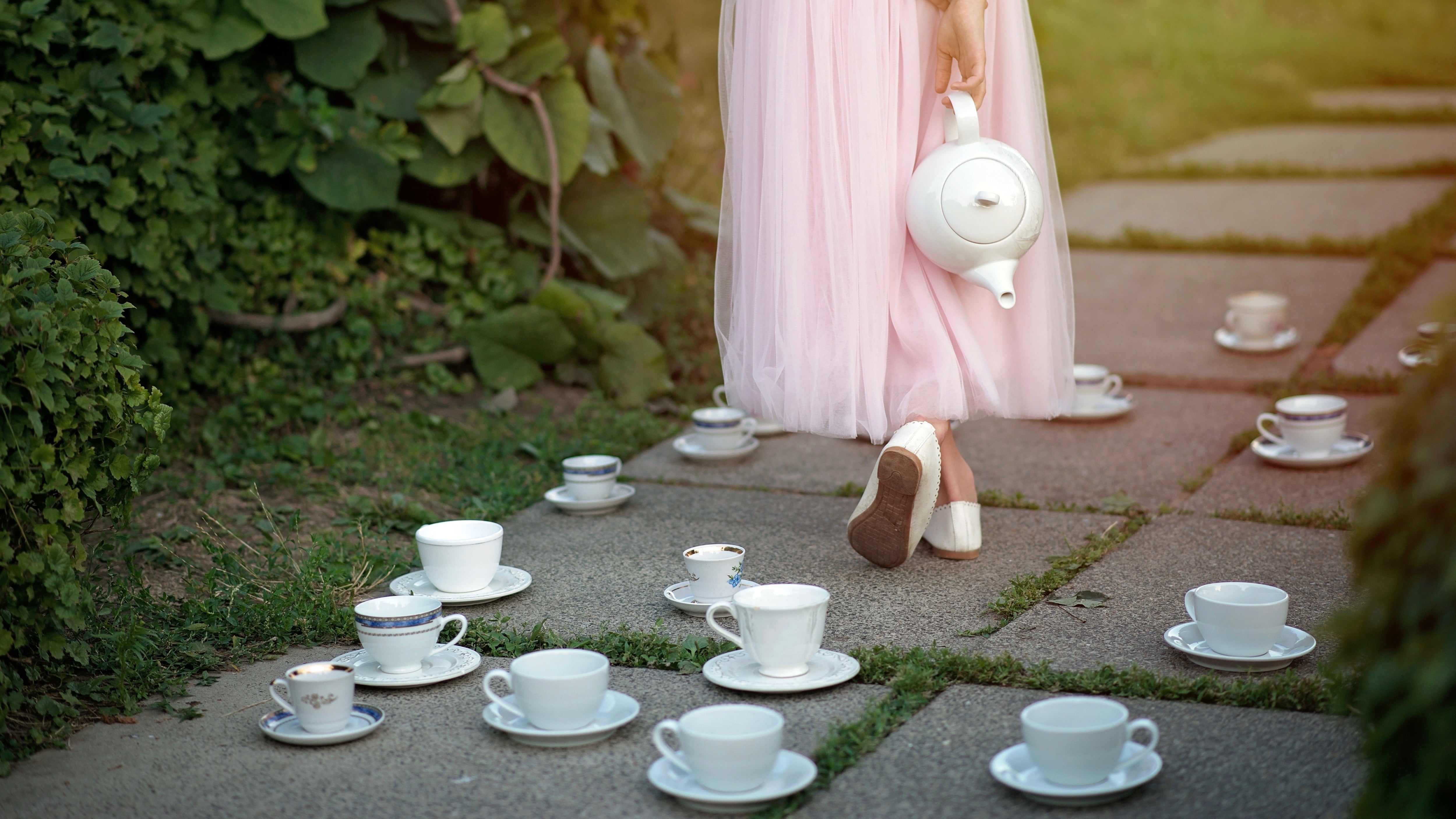Have you ever stared into the bottom of your teacup and wondered if those swirling leaves could tell a story? For centuries, people around the world have sought out answers from within their cups.
This ancient practice, known as tasseography (or tea leaf reading), transforms your daily brew into a canvas for insight and reflection. Forget crystal balls and tarot cards for a moment; there is a treasure trove of knowledge to be found at the bottom of every tea cup!
This spooky season at tea.o.graphy, we unlock a little magic as we explore the art of “reading the leaves” and discover what insights your tea might be waiting to show you…

WHAT IS TASSEOGRAPHY?
Tasseography, also known as tasseomancy or tasseology, is a centuries old divination practice that interprets the shapes of tea leaves. This is often accompanied by a ritual or ceremony that contextualizes the practice, ranging from rather simple to complex.
When a cup of tea has been drunk, often a sediment remains in the bottom of the cup. This sediment forms patterns and symbols within it that can be interpreted by the person reading the leaves. The symbols can be many things, including physical objects or abstract concepts. Due to the variety of cultural rituals around tasseography, the interpretation of symbols and their meaning varies from culture to culture.
The etymology of the terms themselves give us more direct insight into the practice. All of them are derived from the French word tasse meaning cup, which itself comes from the Arabic word tassa, with Greek suffixes -graph meaning writing, -mancy meaning divination, and -logy meaning the study of. Fancy ways of saying the art of studying, reading, or divining from tea leaves in a cup.

FORTUNE IN A CUP : THE HISTORY OF TASSEOGRAPHY
The tea trade made tea popular across the entire world, and wherever tea was popular, so too was divining through the leaves. Through the centuries, as tasseomancy followed the tea trade routes through Asia and Europe, the practice of reading tea leaves spread.
While tea leaf reading is said to have originated in China, likely soon after the creation of tea, the widespread desire for tea meant many cultures created their own forms of the divinatory practice. Although tea leaves are commonly used, in different cultural traditions, the art can also be done using coffee grounds or wine sediment.
Tea-leaf reading reached peak popularity in the western world during the Victorian Era. This was a time when tea became widely available to the lower and middle classes, instead of a drink reserved for the wealthy elite.
By this time in England, the practice had become rather synonymous with the Roma, a diasporic people from India. While there are many cultures that practice varying types of tasseomancy, it was the Roma who were largely responsible for sharing the practice far and wide. As with palmistry, cartomancy and other fortune telling traditions, Romani-style tasseomancy became fashionable wherever the Roma traveled.
Even when tasseomancy took a dive in popularity in the early 1900’s due to the invention of the tea bag, Romani-themed tea rooms remained trendy with the middle classes and upper classes through the 1930s.
All the while there were many discriminatory policies passed and anti-fortune telling laws that prevented Roma themselves from practicing tasseomancy and other forms of fortune telling that had historically been a way for the Roma to make a living when they had largely been excluded and isolated from society. These laws essentially banned them from continuing to make money through their craft. Despite all of this, Roma practices and influence have persisted through time and into the modern day.
Before you begin your tea leaf reading journey, and especially if you are new to tea, I suggest reading up on the origins and history of tea to become closer to the leaves you're about to read!
A GUIDE TO READING YOUR LEAVES
MATERIALS:
-
Loose leaf tea of your choice
-
Teacup
-
Saucer (or if none on hand, a paper towel can also work in a pinch!)
-
Or our very own tasseography kit will do the trick!
SELECTING THE RIGHT CUP:
When choosing the best cup for tea-leaf reading, a light colored or white cup is preferred since this will make it easier to see the shapes and patterns in the leaves clearly. However there are a variety of different tea divination cups used depending on the culture and practice.
For example, in China a traditional gaiwan cup is preferred for tea-leaf readings, as the traditional way to drink from a gaiwan already includes keeping the tea leaves in the cup rather than straining them. While a simple light colored cup and saucer are all that is really needed, there are also specific tasseography cups made for reading leaves:
-
Zodiac Cups: These have astrological and planetary symbols inside the cup/saucer sets, which allows the reader to interpret astrology into the reading.
-
Playing Card Cups: These cups incorporate cartomancy with tasseomancy. “Cartomancy” is divination using playing cards, and these cup/saucer sets use card imagery to add to the interpretation.
-
Symbol Cups : These cup/saucer sets are a sort of interpretation cheat-sheet. Many of the most common tasseography symbols are incorporated into these sets to make them handy reference guides.
SETTING INTENTION:
The magic of tasseomancy starts before you even prepare your tea. It all begins by setting an intention or blessing for your reading.
Once you have collected your materials, consider your goals. For instance, what insight or question do you wish to ask? Are you reading for another or for yourself?
Keep your intentions clear in your mind as you prepare the tea and the ritual.
PREPARING THE TEA:
Tea-leaf reading is popular all over the world, therefore styles and techniques used are varied, as is the tea used for such ceremonies.
Black, oolong, and green teas tend to be the most common, but you may use any kind of tea you like, caffeinated or herbal.
Although there is no consensus on what specific type of tea is used, there is agreement that loose leaf is highly preferred. This is because the loose tea leaves are larger than the leaves used in tea bags and the larger leaves are better suited to forming symbols and figures at the bottom of a teacup.
-
Before you brew the tea, make sure to cleanse/warm your cup by pouring boiling water into it, swishing it three times clock wise and pouring it out.
-
Now add your chosen tea leaves directly to your cleansed cup, no strainer needed.
-
Pour hot water over the leaves and let them steep for a few minutes.
-
Keep your intention in your mind as you stir the tea and wait for it to steep.
-
You may add any milks or sweeteners to your taste.
THE RITUAL OF READING LEAVES:
Concentrate on your question or intention.
If you have a specific question in mind, concentrate on it while drinking your tea. Otherwise focus your overall intention through the next steps.
Drink your tea.
-
Wait for the leaves to sink to the bottom of the cup then sip slowly.
-
Enjoy the sensory experience of the tea, the smells, the tastes, the steam rising from the cup.
-
Drink as much of the tea as you can but make sure to leave a small amount of liquid in the bottom of the cup.
Swirl the leaves.
-
When you have finished drinking, gently swirl the cup in a clockwise motion three times to distribute the leaves evenly around the bottom of the cup.
-
Turn the teacup upside down on the saucer (with the handle facing the person getting the reading, or facing you if you’re reading your own cup).
-
Rotate the teacup (still upside down) clockwise three times.
-
Let the remaining liquid drain on the saucer or paper towel for about a minute.
-
Once the time is up, flip the cup over.
-
Examine the patterns in the tea leaves. Pay attention to both the symbols made by the tea leaves and their placement within the cup.
INTERPRETATION:
Understanding Teacup Layout And Timing.
-
Handle: This is the most important part of the cup and it represents the person receiving the reading. If a symbol is found closer to the handle, then its impact on the person getting the reading will be more significant, if it's farther away then the impact is lessened. The handle also acts as the starting point for the reading. From there you work your way around the cup clockwise around the rim and then further into the cup.
-
The Outer Rim: This part of the teacup represents the present or immediate future.
-
Sides Or Middle Of Cup: As you move further into the cup, you are moving further into the future. So the middle section of the cup tends to represent things that are months away.
-
Bottom: The bottom of the cup represents the more distant future.
General Types of Shapes or Symbols.
The shapes created by the tea leaves will generally fall into one of the following categories, Animals, Objects, Elements, or Numbers and Letters. These symbols can then be interpreted to give them significance and meaning to the reader.
Interpret the patterns.
Pay attention to the first images that come to you.
What symbols strike you first?
How do they relate to one another?
What is the feeling or mood of the cup?
Is it cluttered and chaotic, or is it clean and calming?
The mood of the cup will help you understand the overall feeling of the reading itself.
Regardless of what symbols appear in your cup, they all have important characteristics to pay attention to.
-
Location: Where are the symbols in the cup? This is about timing.
-
Appearance: How clear or fuzzy is the symbol? Clarity vs. ambiguity.
-
Direction: Is the symbol facing towards the handle or away from it? This shows control over the situation, symbol facing towards the handle denotes a lack of control, facing away implies control.
-
Size: How large or small is the symbol? This represents the level of power or impact.
Interpret the tea leaf patterns based on your own intuition or any traditional symbolism you are familiar with. With so many different sources providing such varying interpretations, it comes down to trusting your instincts and what resonates with you.

THE VIEW FROM THE BOTTOM OF THE CUP
Tasseography is both a very ancient practice with a long cultural history, and a deeply personal one.
In my own connection with it, as a child, finding shapes in the tea leaves was very much like finding shapes in the clouds outside. It was instinctual and imaginative and I relied on my feelings to interpret the meaning if there was any to be had.
This practice requires a connection to creativity, imagination, and intuition. It requires you to slow down and be present with yourself and surroundings, and to experience the full sensations of the moment.
As with most things, it takes practice to get better. I hope that you are able to find meaning and a new way to connect to yourself, your tea, and your community.
As always we strive to deepen the enjoyment of tea through understanding the history, interconnectedness and ritual that surrounds our favorite drink. Reading tea leaves is yet another way to explore the community and ritual around tea and create a closer connection to all the stories, hands, labor, lives, and love that went into bringing you your brew.
Happy Spooky Season and Happy Steeping!
INSPIRATION AND FURTHER READING:

